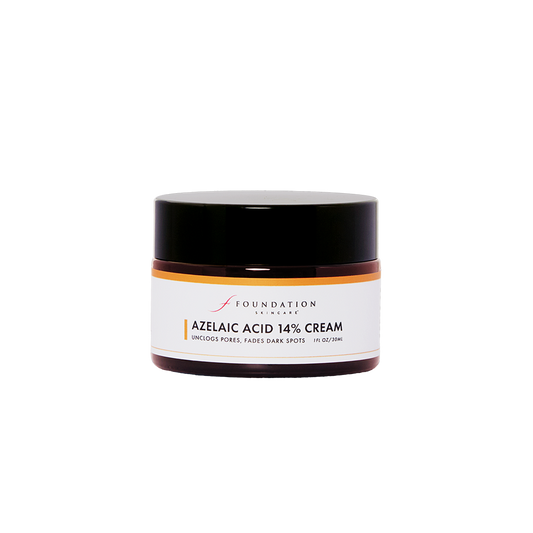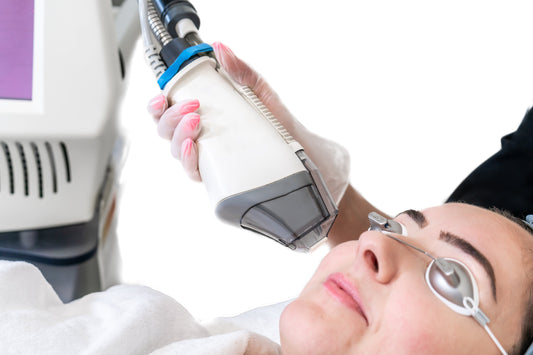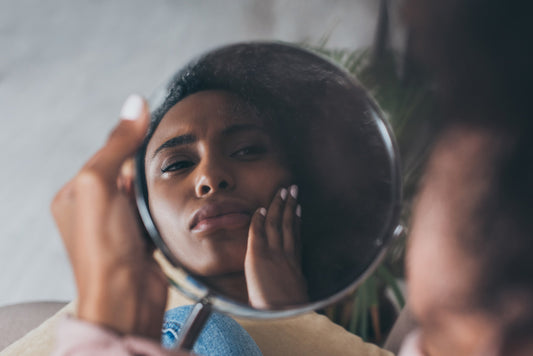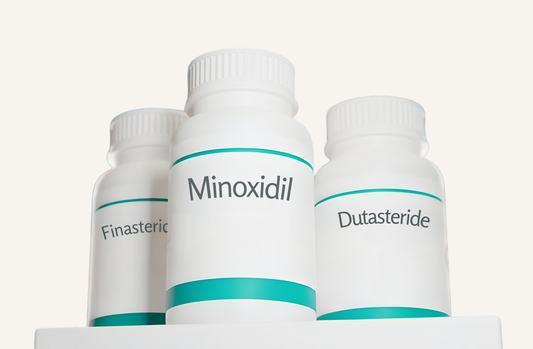Discovering dark spots on your skin, called hyperpigmentation, may startle you, but don’t despair. You can take action to fade skin discoloration or age spots.
What Causes Different Types of Dark Spots?
Hyperpigmentation is a result of too much melanin, the substance that gives color to your skin.1 Melanin overproduction has several causes, but once the cause is removed, dark spots may fade on their own.
Common causes include:2
-
Sun damage: Ultraviolet rays speed up melanin production. Spots caused by sun damage can develop on your face, hands, shoulders, or arms.
-
Hormones: Areas of discoloration, called melasma, are common in women,particularly when pregnant.
-
Medication: Some drugs, particularly anti-inflammatories, chemotherapy medications, antimalarials, or anticonvulsants, can cause skin discoloration.
-
Inflammation: Skin inflammation caused by conditions like eczema, psoriasis, or acnes.
-
Wounds: Like inflammation, insect bites, cuts, or burns can cause lingering dark spots on skin.
-
Irritation: Dark spots can occur after using some types of skin or hair products that irritate the skin.
-
Diabetes: Skin discoloration can be a side effect of diabetes-related skin conditions.
-
Skin cancer: Some dark patches can be skin cancer or melanoma. See your doctor if you notice spots that are asymmetric, have ragged, blurry, or notched borders, have irregular coloring, are larger than ¼ inch across, or change in color or size.
Best Skincare Products That Target Dark Spots
You have two main choices when it comes to treating dark spots: creams and lotions, or procedures performed by a dermatologist.
In-office procedures include dermabrasion or microdermabrasion, chemical peels, cryotherapy, and laser light therapy.4 These treatments may have more immediate results, but can also come with some negative side effects and expense.1
You can start with over-the-counter or prescription creams and lotions that can fade spots. These are typically gentler on your skin and can come with added benefits of reducing fine lines or helping skin look healthier.
Key Ingredients to Look for in Dark Spot Correctors
You may be overwhelmed when trying to decide which skincare products are best to even out your skin tone. Look for products with the following ingredients for reliable results.3 You may find that using more than one product works best for you.
-
Azelaic acid: Studies show that azelaic acid works well to fade dark spots caused by melasma and post-inflammatory hyperpigmentation. For best results, combine with glycolic acid and use it for at least 12-15 months.8
Foundation Skincare’s Azelaic Acid 14% Cream is a great choice for fighting skin discoloration with the highest percentage of azelaic acid available without a prescription. Not only does it lighten acne scars and brown spots, but it helps reduce redness caused by acne breakouts and inflammation.
-
Hydroquinone: Available only in prescription creams and lotions, hydroquinone has been used for decades to lighten dark spots caused by hyperpigmentation. It also can have some negative side effects.
-
Kojic acid: Made from mushrooms, kojic acid is effective in reducing melanin production and lightening skin.5
-
Niacinamide: Studies show niacinamide, a form of vitamin B3, reduces dark spots on skin while also reducing acne outbreaks, fine lines, and wrinkles.6
Niacinamide Lotion 10% gives you the maximum over-the-counter concentration of niacinamide and is Foundation Skincare’s go-to product for lessening the effects of sun damage and hyperpigmentation.
-
Retinol: A form of vitamin A, retinol can reduce dark spots caused by sun damage and acne.9 It’s often combined with other products for best results.
Night Renewal Cream is the perfect product to add to your nighttime skincare routine to reduce dark spots, control inflammation flare ups from acne or rosacea, and make skin look firmer.
-
Vitamin C: Essential for healthy skin, vitamin C is an antioxidant that can help regulate melanin production as well as reduce the effects of aging on the skin.7 Vitamin C is gentle on your skin, making it a great choice to layer with other products to fight hyperpigmentation.
Vitamin C Lotion 20% was created by dermatologists to fight the aging effects of sun damage while gently exfoliating dead skin cells.
Foundation Skincare products not only help reduce hyperpigmentation, but work well together to give you the best results. In addition to your topical skincare regimen, Pigmentation Defense combines antioxidants, herbs, and vitamins in an oral supplement that can even out your skin tone.
Azelaic Acid 14% Cream
• Brightens skin, fades brown spots
• Unclogs pores, improves texture
How to Incorporate Dark Spot Treatment Into Your Skincare Routine
You’ve found some new products to help reduce your hyperpigmentation, but how do you add them to your existing skincare routine?
First, always follow the instructions on the label or from your doctor. Introduce new products slowly to avoid any irritation.
After you wash your face, apply skincare products from the lightest to the heaviest to ensure the greatest absorption of each product.11
For example, during the day, apply a toner, then topical treatments followed by serums, which tend to be thicker. Then apply your eye cream, moisturizer and sunscreen. These will create a barrier to keep environmental toxins from reaching your skin. All of the Foundation Skincare products layer very well with each other.
At night, you will follow a similar pattern, but apply your retinol product instead of your serum and skip the sunscreen.
Ways to Help Prevent Dark Spots
The best way to prevent dark spots on your skin is to protect your skin from sun damage. Wear a hat and protective clothing, including sunglasses when outside during the day. Most importantly, wear SPF 30+ sunscreen every day. We can’t say this enough. It’s the best thing you can do for your skin.10
Hyperpigmentation isn’t a cause for alarm. There are products that can help reduce dark spots and discoloration. Plus, you can get some added benefits by layering products that also reduce wrinkles and help your skin stay bright and healthy. Turn to Foundation Skincare to find what you need to feel confident and comfortable in your skin.
References:
-
https://www.medicalnewstoday.com/articles/324833
-
https://www.mayoclinic.org/diseases-conditions/age-spots/symptoms-causes/syc-20355859
-
https://health.clevelandclinic.org/skin-care-ingredients-explained
-
https://www.mayoclinic.org/diseases-conditions/age-spots/diagnosis-treatment/drc-20355864
-
https://pmc.ncbi.nlm.nih.gov/articles/PMC10094916/
-
https://pmc.ncbi.nlm.nih.gov/articles/PMC3142702/
-
https://pmc.ncbi.nlm.nih.gov/articles/PMC7802860/
-
https://pmc.ncbi.nlm.nih.gov/articles/PMC5843359/
-
https://pmc.ncbi.nlm.nih.gov/articles/PMC8776661/
-
https://www.aad.org/public/everyday-care/skin-care-basics/care/apply-skin-care-certain-order
-
https://www.prevention.com/beauty/skin-care/a42055256/what-order-to-apply-skincare-products






